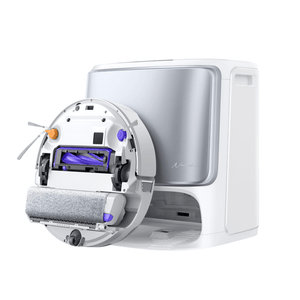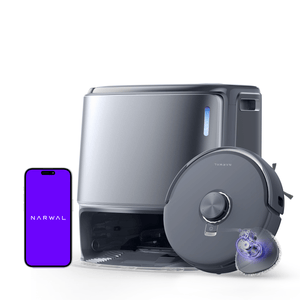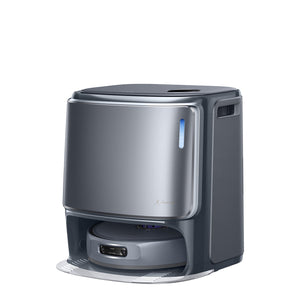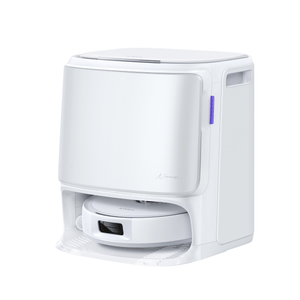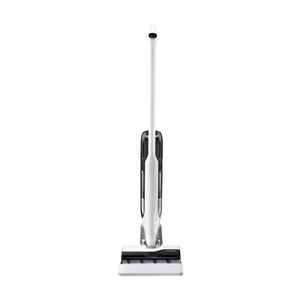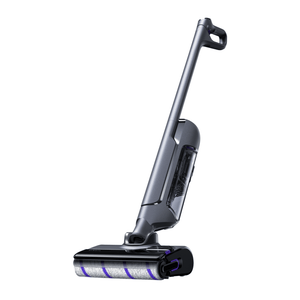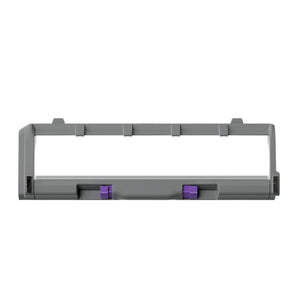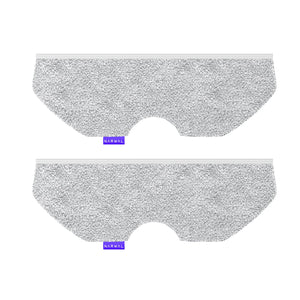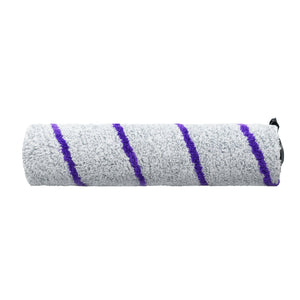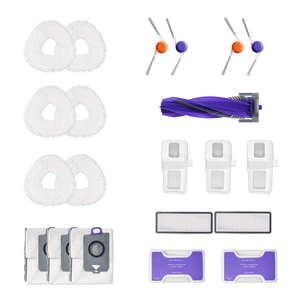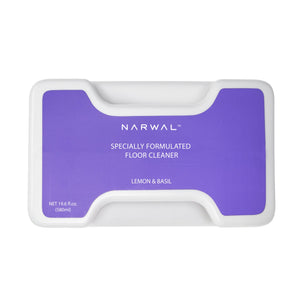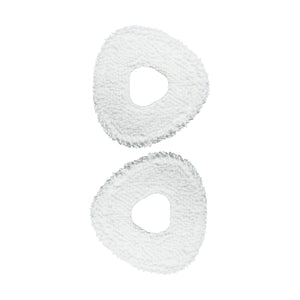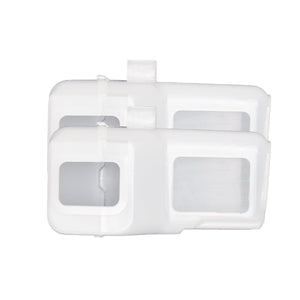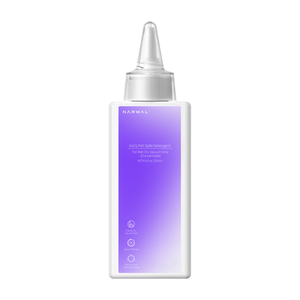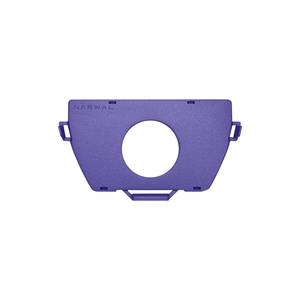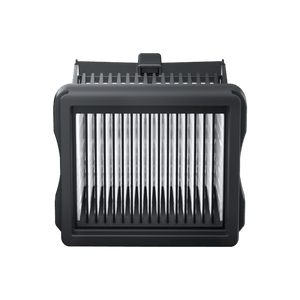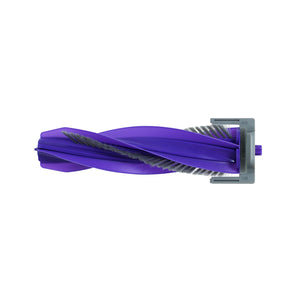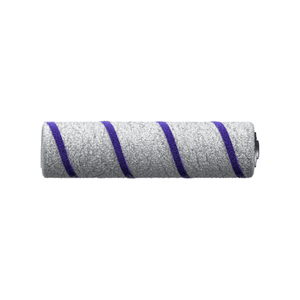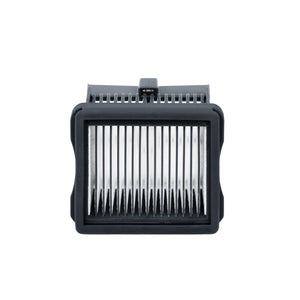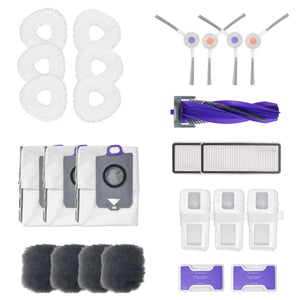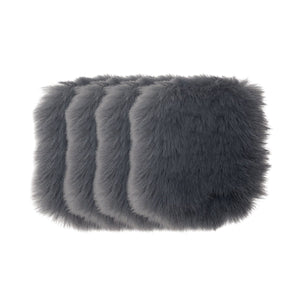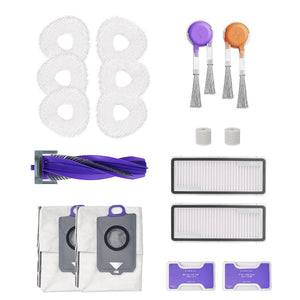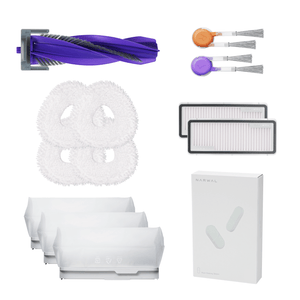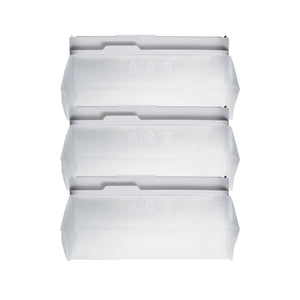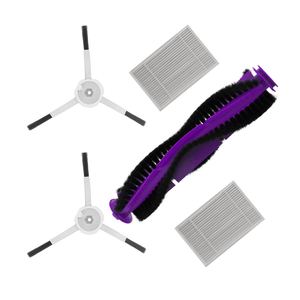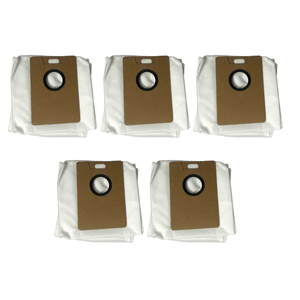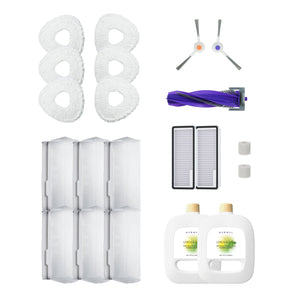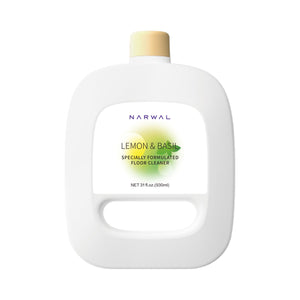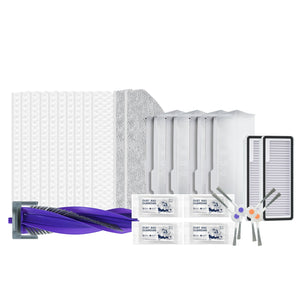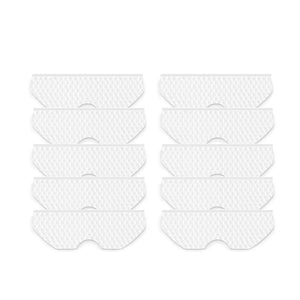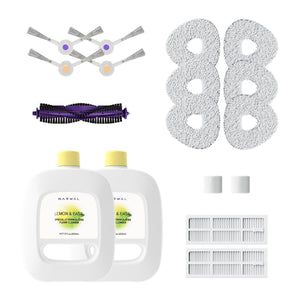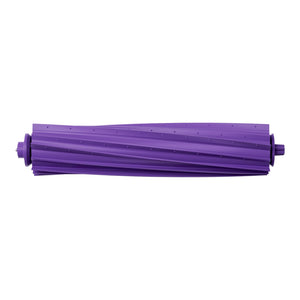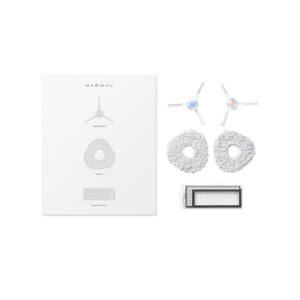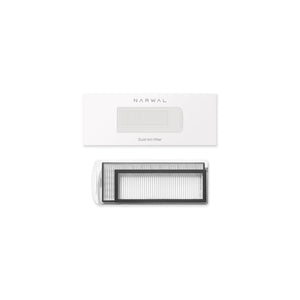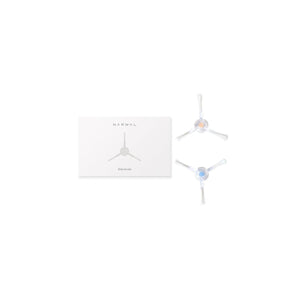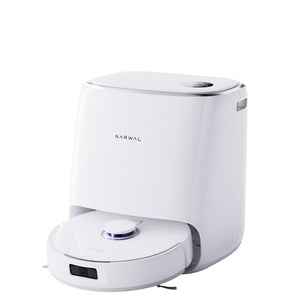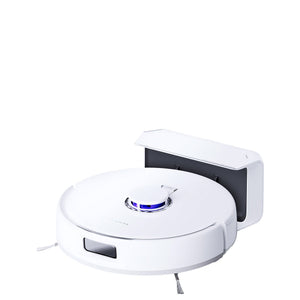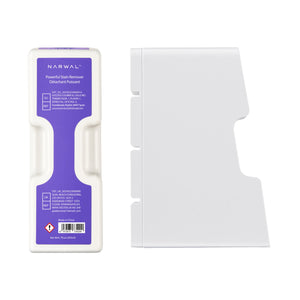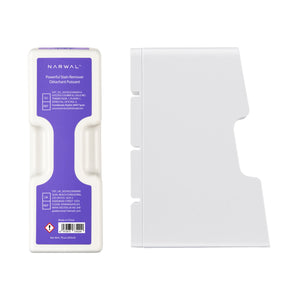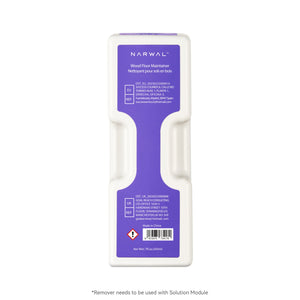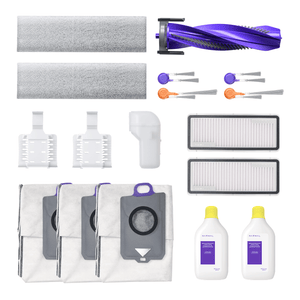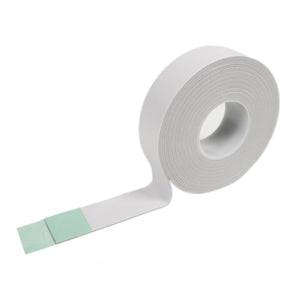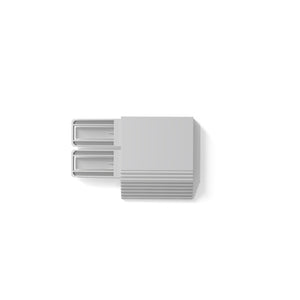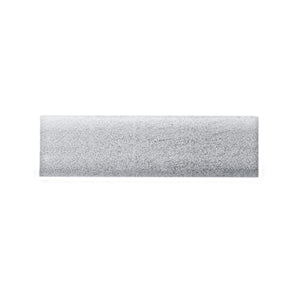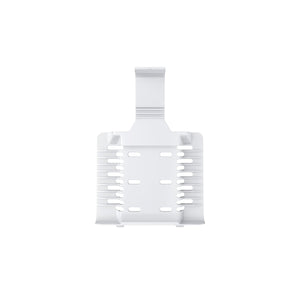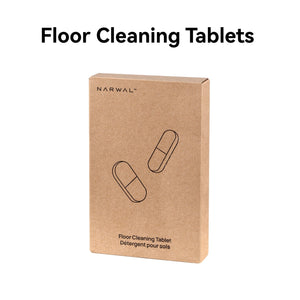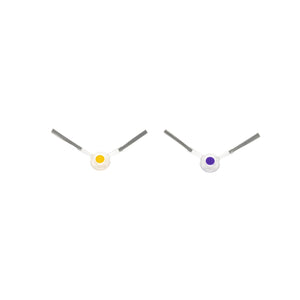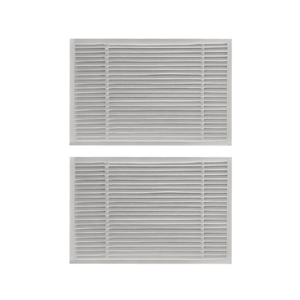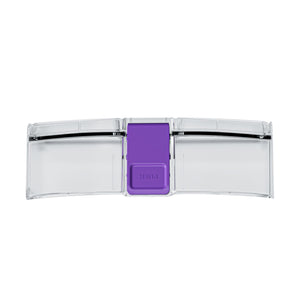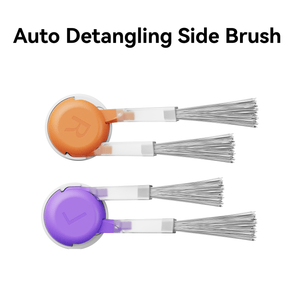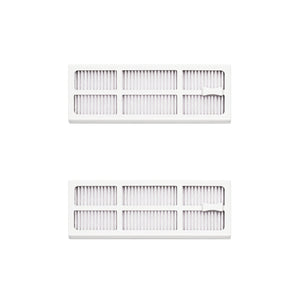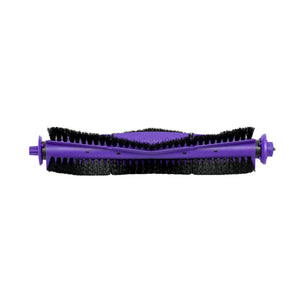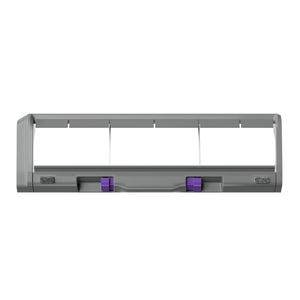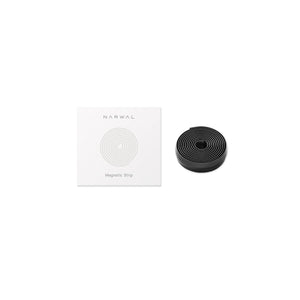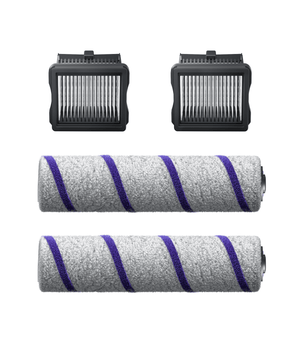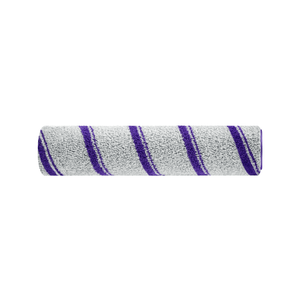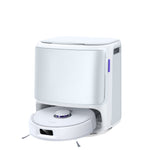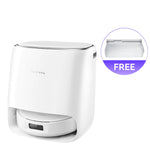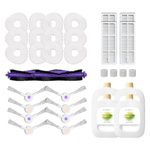Why is your robot vacuum suddenly as loud as an airplane? Many owners face this problem—grinding, rattling, or squeaking noises that disrupt daily life. In fact, surveys show clogged filters and worn brushes are the top causes behind noisy robot vacuums.
This guide explains the common reasons for loud robot vacuums, how to fix grinding or squeaking issues yourself, brand-specific noise problems, and smart tips to make a robot vacuum quieter. We’ll also show when it’s time to consider a quieter model like Narwal, designed to deliver strong suction without the constant hum.
What Causes Loud Noise in Robot Vacuums?
If your robot vacuum suddenly starts sounding like it's scraping the floor, rattling while turning, or making a high-pitched whine during cleaning, you're not alone. These noises are common across all major brands—Roomba, Shark, Roborock, Eufy, and Deebot—and often stem from physical obstructions, worn components, or maintenance issues. Below are the most common noise types, how to identify the cause, and what you can do to fix it.
Grinding or Clicking Sounds During Movement
User scenario: You hear a rough scraping or clicking noise every time the vacuum moves across the floor—especially after cleaning a high-pile rug or pet area.
Most common in: Roomba, Deebot, Shark
Likely cause: Hair or debris tangled in the main brush or wheels.
How to fix it:
-
Turn off and flip the vacuum over.
-
Remove the main brush and inspect both ends.
-
Spin the side wheels by hand to feel for resistance or noise.
-
Use tweezers or a soft cleaning brush to remove tangled hair and debris.
-
Clean brushes and wheels weekly if you have pets or long hair in the home.
Rattling or Shaking While Running
User scenario: Your vacuum sounds like something is loose or shaking around inside during cleaning or turning.
Most common in: Shark, Roborock
Likely cause: Loose dustbin, brush housing, or screws.
How to fix it:
-
Gently shake the vacuum while powered off to check for internal rattles.
-
Check the dustbin, side brush, and roller cover for looseness.
-
Use a small Phillips screwdriver to tighten visible screws on the underside.
-
Press down on all removable parts to ensure they click securely into place.
Constant Loud Motor or Airflow Whine
User scenario: You notice the vacuum sounds louder than usual—like the motor is straining—especially when cleaning carpets or after a full cycle.
Most common in: Eufy, Roomba
Likely cause: Clogged filters or worn brushes increasing strain on the motor.
How to fix it:
-
Remove the dustbin and take out the filter.
-
Tap gently to remove excess dust or rinse if the filter is washable.
-
Check airflow by running the vacuum briefly without the filter installed (only for test).
-
Inspect the brushes for frayed bristles or warping.
-
Replace filters every 2–3 months; replace brushes every 6–12 months depending on use.
Sudden Noise After Software Update
User scenario: Your vacuum worked fine before a recent app update. Now it's louder without any visible mechanical issue.
Most common in: Roborock, Roomba, Shark (app-connected models)
Likely cause: Firmware calibration change or software bug.
How to fix it:
-
Open the app associated with your vacuum and check for available updates.
-
Install any firmware or software patches available.
-
Reboot the vacuum after update and test noise level.
-
If issue continues, try a factory reset (refer to the official guide).
-
Contact customer support if the noise persists.
Preventing noise starts with routine maintenance. Clean brushes and wheels weekly, replace filters on schedule, and periodically check for loose parts. These small steps go a long way toward keeping your vacuum quiet and efficient.
Noise Diagnosis Quick Reference
This quick reference can help you match specific noises to their root causes and address the issue faster.
|
Noise Type |
Likely Cause |
Where to Check |
|
Grinding/Clicking |
Debris in brush or wheels |
Main brush, side wheels |
|
Rattling |
Loose parts |
Dustbin, brush module, screws |
|
High-pitched Whine |
Blocked airflow or motor |
Filters, air ducts, internal fan |
|
Squeaking |
Dry or dirty wheels |
Rear wheels, axles, brush bearings |
This quick reference can help you match specific noises to their root causes and address the issue faster.
Why Is My Robot Vacuum So Loud All of a Sudden?
Your robot vacuum may have been working quietly for weeks—then suddenly starts making a loud grinding, humming, or rattling noise without warning. This abrupt shift is common and usually signals a specific trigger, not just routine wear.
Unlike general noise issues caused by long-term buildup, sudden loudness often follows a particular event, such as cleaning a high-dust area, running over cords, or installing a firmware update.
Common triggers for sudden noise:
-
Debris picked up during the last run: A piece of string, pet toy, or clump of dust may have jammed the brush or wheel unexpectedly.
-
Loose component after carpet transition: Moving from a hard floor to a thick rug can dislodge the brush roll or side brush slightly.
-
Filter blockage from heavy dirt: After a deep clean, the filter may clog instantly, forcing the motor to overcompensate and become noisy.
-
Recent software or firmware update: Some users report increased suction noise after updates that recalibrate motor power.
What to do when this happens:
-
Flip the vacuum and inspect the underside for new debris or part misalignment.
-
Remove and reseat the brushes, dustbin, and wheels to check for looseness.
-
Check the filter, especially if you recently vacuumed carpets or pet-heavy areas.
-
Review the app for firmware updates or suction setting changes.
-
Restart the device after adjustments and listen for improvement.
If the noise persists, it could indicate a failing motor or internal bearing wear. At that point, contacting support or evaluating replacement options might be more cost-effective.

Brand-Specific Fixes: Roomba, Roborock, Shark, Eufy, Deebot, Narwal
While most robot vacuums get noisy for similar reasons, certain brands tend to develop recurring sounds in specific ways. Below is how each major brand typically behaves when noise problems start—and what you should know when checking.
Roomba: Grinding or Harsh Mechanical Noise
Roombas often start grinding when hair builds up inside their enclosed brush module. Unlike open-frame rollers, Roomba’s design seals the bearings, making debris harder to see and clean. If you notice uneven spinning or scraping, especially after heavy use on carpets, check both roller ends for internal hair wraps or resistance.
Shark: Clicking or Loose Rotation Sounds
Shark models may develop rhythmic clicking during use, often due to the main brush or side modules becoming slightly unseated over time. This can happen even if the vacuum appears fine externally. If the clicking gets worse during turns or over thresholds, gently press the brush and rollers back into place to ensure a firm fit.
Eufy: Low-Frequency Humming or Vibration
Eufy vacuums sometimes emit a loud hum or buzzing without visible blockages. This is often tied to unbalanced brush rollers or aging internal fans. If the noise starts suddenly after months of quiet use, check that both sides of the roller are seated evenly. If vibrations persist, fan-related wear may be the cause.
Deebot: Clicking While Turning
Deebot models may click or knock during turning, particularly on textured floors. This typically stems from dirt or hair inside the wheel gears rather than the brush. If the noise only occurs during movement changes, test each wheel by hand to feel for resistance, and clear out the axle housing as needed.
Roborock: Squeaking on Hard Floors or Rugs
Roborock users often report squeaking or friction sounds, especially after months of use on hardwood or high-pile rugs. These are rarely motor-related. Instead, they often come from dry axles or suspension components. A soft wheel cleaning and a touch of silicone-based lubricant can usually resolve it.
Narwal: Contact Support for Any Mechanical Noise
Narwal vacuums are engineered to operate quietly. If your Narwal unit begins making grinding, rattling, or high-pitched noises, do not attempt to disassemble or repair it yourself. Unauthorized repairs can cause further damage and void your warranty.
Instead, reach out to Narwal customer support directly. Their service team is trained to handle internal diagnostics safely. Attempting to open the unit may lead to additional wear or system imbalance, and any self-repair damage is not covered under the standard warranty.
If you’ve tried all the above and your robot vacuum is still noisy, it might be time to consider a quieter model. Below are top picks known for low-noise performance and strong suction.
Quieter Alternatives for Powerful Yet Silent Cleaning
If your robot vacuum keeps rattling, squeaking, or grinding even after DIY fixes, it may be time to look at quieter models. Most standard vacuums operate at 65–75 dB, loud enough to disrupt work or sleep. High-end models, however, combine strong suction with advanced noise-reduction to create a much calmer experience.
Narwal Freo Z Ultra is one of the best examples. With 12,000 Pa suction power and dual RGB cameras powered by AI chips, it doesn’t just clean intelligently—it also runs quietly. The self-washing and drying base keeps brushes and mops fresh, so you don’t hear the extra strain of clogged parts. Owners often describe it as “tornado suction with a breeze sound.”
[cta:narwal-freo-z-ultra-robot-vacuum-mop]
Narwal Flow pushes things further with 22,000 Pa hyper suction while keeping noise under 57 dB. Its FlowWash system uses real-time mop self-cleaning and CarpetFocus tech to adapt suction without raising noise levels. For homes with pets or carpets, it offers both raw power and peace.
[cta:flow-robot-vacuum-and-mop]
For comparison, other well-known models like Roborock S8 Pro Ultra and iRobot Roomba j7+ deliver around 5,000–8,000 Pa suction with noise levels closer to 65–70 dB. They clean well, but if silence is a top priority, Narwal models stand out by pairing higher suction with lower decibels.
The takeaway: noise isn’t just a comfort issue—it’s part of performance. A quiet vacuum means the motor isn’t straining, airflow is optimized, and cleaning is more efficient. If your old robot screams like an airplane, upgrading to a modern low-noise model could be the real fix.
User Experiences with Noise Levels
While manufacturers often list the decibel rating of their machines, real-world experiences tell the full story. On forums like Reddit and product reviews, users frequently compare how loud their robot vacuums actually sound and whether the noise disrupts daily life. Many complaints begin with “my robot vacuum is making loud noise” or “why is my robot vacuum so loud”.
|
Robot Vacuum Type |
Typical Noise Level |
User Feedback |
|
Entry-Level Models |
70–75 dB |
“Almost as loud as a standard vacuum. My dog runs away every time.” |
|
Mid-Range Models |
65–70 dB |
“Not unbearable, but still too noisy for calls or TV.” |
|
High-End Models (e.g., Narwal Flow) |
55–60 dB |
“Surprisingly quiet. It really feels like background noise, more like rain than a machine.” |
These shared experiences highlight one truth: robot vacuum noise isn’t just about numbers, it’s about comfort. A machine that constantly rattles or whines quickly becomes a frustration, no matter how well it cleans. By contrast, quieter models let users run them during work, study, or even sleep without stress.
Narwal Flow is often mentioned positively in this context. With ≤57 dB in vacuum mode, it operates at a level many describe as “peaceful” compared to noisy robots. This quieter cleaning experience makes it easier to integrate into daily routines, proving that sound levels matter just as much as suction power.
How to Identify Robot Vacuum Problems by the Sounds They Make
Not all unusual sounds mean your robot vacuum is damaged—but some are early warnings. This guide helps you recognize noise types, what they likely mean, how urgent the problem is, and whether you can fix it yourself.
|
Noise Type |
Description |
Likely Cause |
Severity |
Self-Fixable |
|
Grinding / Scraping |
Harsh scraping or rough sounds during movement |
Tangled debris or brush misalignment |
Medium |
Yes |
|
High-Pitched Whine |
Shrill whirring or squealing, often constant |
Blocked airflow or motor strain |
High |
Partially |
|
Rattling |
Loose or clunky vibration during operation |
Dustbin, side brush, or screw looseness |
Low |
Yes |
|
Squeaking |
Repetitive squeaks when wheels turn |
Dry axles or worn wheel bearings |
Low |
Yes |
Interpreting These Sounds
-
High-Pitched Whine: Often caused by blocked airflow. If ignored, it can lead to motor strain. Clean filters and vents immediately. If the noise persists, internal servicing may be needed.
-
Grinding or Scraping: Typically caused by hair or debris wrapped around the brushes or wheels. Check the main brush and side wheels, especially after cleaning rugs or pet-heavy areas.
-
Rattling: Usually harmless but worth checking. Look for loose dustbin locks or unsecured screws—common after long-term use.
-
Squeaking: This sound often comes from dry wheel joints or aging rubber. Cleaning and applying silicone lubricant on wheel axles usually resolves it.
Tip for Ongoing Noise Checks
To track changes in sound over time, run your vacuum in an empty room and record the audio during operation. This makes it easier to spot when something sounds different or louder than usual.

Enjoy a Cleaner, Quieter Home
Noisy vacuums don’t have to be your reality. The latest Narwal models, like Freo Z Ultra and Flow, deliver powerful suction with whisper-level noise, so you can clean anytime without disruption. If constant grinding and rattling have been driving you crazy, upgrading to a quiet, high-performance vacuum is the simplest way to restore peace at home.
Explore Narwal today and see how effortless—and quiet—cleaning can be.
FAQs
What are the downsides of using a robot vacuum?
They need frequent maintenance, can struggle with corners, and may have limited battery life. High-end models reduce these issues but can be costly.
How can I make a robot vacuum run quieter?
Keep brushes and filters clean, tighten all components, and place it on even floors. Choosing a quieter model also makes a big difference.
What noise level should I expect from a robot vacuum?
Most models run between 55–70 dB. Premium vacuums can be quieter, some working under 40 dB, similar to light rain.
Why does my vacuum sound like an airplane or lawn mower?
This usually means the motor is under heavy load or airflow is blocked. Clean filters and clear ducts to bring the sound back to normal.
Why is my vacuum getting noisier over time?
Wear on brushes, fans, or bearings can gradually increase noise. Regular maintenance and timely part replacement prevent this.
How long does a robot vacuum usually last?
With proper care, most last 4–6 years. Heavy use without maintenance can shorten lifespan.
Why is my wet/dry shop vacuum so loud?
Shop vacuums are built with powerful motors, so they’re naturally louder. If yours suddenly gets noisier, check for clogs or worn filters.




